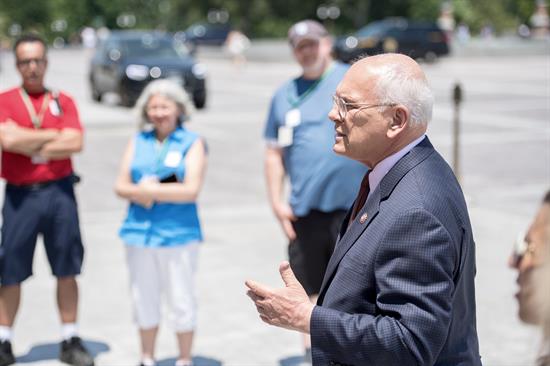- Home
- About
-
Constituent Services
- Academy Nominations
- Community Project Funding
- Congressional Art Competition
- Congressional App Challenge
- Congressional Commendation
- Event Invitation
- Grants
- Help with a Federal Agency
- Internships
- IRA Clean Energy Consumer Benefits
- Know Your Rights: Immigration
- Request a Meeting
- Request Surplus Books
- Presidential Greeting
- Visit Washington D.C.
- Issues & Legislation
- News
- 20th District
- Contact

Press Releases
Tonko Leads Bipartisan Group of New Yorkers in Push for Funding Extension for Erie Canalway & Hudson River Valley Heritage AreasHeritage Caucus co-chair Tonko leads bipartisan push to reauthorize New York Heritage Areas, open door for sites to gain additional federal resources
Washington,
June 25, 2021
WASHINGTON—Congressman Paul D. Tonko (NY-20) announced today that he has reintroduced two pieces of legislation that would reauthorize the Erie Canalway National Heritage Corridor and the Maurice D. Hinchey Hudson River Valley National Heritage Corridor as National Heritage Areas. If passed, the legislation would authorize these historic sites to continue receiving federal support. The bipartisan Erie Canalway Reauthorization legislation is co-sponsored by Representatives Sean Patrick Maloney (NY-18), Antonio Delgado (NY-19), Elise Stefanik (NY-21), John Katko (NY-24), Joe Morelle (NY-25) and Brian Higgins (NY-26). Currently, 32 of the 55 National Heritage Areas across the nation are slated to lose their authorizations later this year, a lapse that would cut off critical funding needed to maintain these heritage sites that are more than markers of local history and culture—they are also often major economic drivers supporting countless jobs and small businesses in the surrounding communities. Heritage areas are distinct in part because they are maintained by public-private partnerships with an estimated $5.50 in private funding matching every $1 in federal money. “America’s National Heritage Areas have long stood as historic and treasured sites that support countless jobs, drive economic growth through tourism, foster community activities and child and family education and fun even while they instill in us a deeper connection to the places we visit or call home,” Congressman Tonko said. “In our own Capital Region, these legendary sites include the Erie Canalway National and Hudson River Valley National Heritage Corridor. As we continue the work of rebuilding our communities and our economy from the hardships of the COVID pandemic, I am proud to stand shoulder to shoulder with my fellow New York colleagues to push for this needed legislation to maintain a critical lifeline for two of New York’s most treasured historic and cultural assets, opening doors for that renewed economic opportunity and a rebirth of community engagement for our Capital Region and beyond.” “Maurice Hinchey lived to serve others and protect our environment – he was a model public servant who inspired my own service to the people of the Hudson Valley. It was my honor to immortalize a true legend by passing legislation to rename the area in the 116th Congress. I am proud to be working with Rep. Tonko to reauthorize theses Heritage areas through 2036, allowing them to continue receiving the funding and resources necessary to maintain similar environmentally significant sites across the country. These sites contribute to our local economy and make up the fabric of our community. We can’t afford to lose them,” said Rep. Maloney. Bob Radliff, the Executive Director of the Erie Canalway National Heritage Corridor: “We appreciate the leadership of Congressmen Tonko and Maloney in cherishing our interconnected Erie Canal and Hudson Valley heritage. Their visionary efforts are fostering new opportunities for recreation, tourism and economic development that create long-term value for upstate New York communities.” "The Maurice D. Hinchy Hudson River Valley National Heritage Area annually generates nearly $1 billion in economic impact and creates nearly 10,000 jobs. We salute Congressmen's Maloney and Tonko, and all of New York's supportive Congressional delegation, for their tireless efforts to reauthorize this program," said Scott Keller, Executive Director of the Hudson River Valley National Heritage Area. As co-chair of the Heritage Caucus, Rep. Tonko has long pressed for legislation that supports America’s heritage areas. For years, he has championed the bipartisan National Heritage Area Act. A major provision of the bill would end the current system that forces existing National Heritage Areas to work for individual reauthorizations. The United States Department of Commerce estimates that heritage areas contribute $192 billion to the U.S. economy every year. These sites are a powerful leverage of public funds, with public and private partnerships matching an average of five dollars and fifty cents for every one dollar in federal funding—a nearly 6 to 1 return on investment for the American taxpayer. ### |
